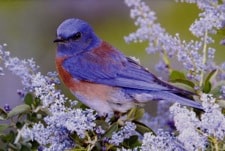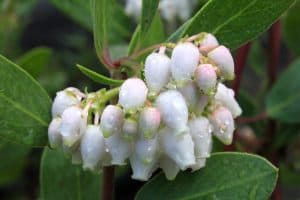Winter solstice will remind us that all nature, expectant in spring, exuberant and extravagant in summer, at once reflective and anticipatory in fall, will now enjoy a much deserved moment of silence and rest. Our southern California seasons may not be as pronounced as those in colder climes, but short days and long nights everywhere translate into great opportunities to experience your garden, literally in a new light.
At this writing in early December, we are still waiting for our first real rain. Some drops have fallen, here and there, now and then… but when you have to measure in (only) a few hundredths of an inch with each rain event, you know that your garden plants have not benefited, save for the washing of a few leaves, (barely). Recently, clear hot days have given way to clear cool nights. Remarkably, we have not even seen our first frost here at the nursery, so early winter 2017 is proving to be both dry and warm… and late.(?)
Watering
A repeat from November: In lieu of rain, feel free to water your garden as necessary. With cooler soils and shorter days, there is practically no danger from root rot from overwatering. By now you should be very familiar with our WATERING GUIDE, which explains every detail. Apply 1.5 – 2” of water. With the short day length, your plants are not using as much water through growth and transpiration. With cool nights, your soil will stay wet for a longer time, so timely waterings will not need to exceed once a month in frequency.
Related to Watering
As you are observing winter migratory birds returning to your garden, you might want to assess and rework your soil… or vice versa… if you are doing winter soil work, stand up, stretch your back and check out all the cool birds. The ground work you should do includes assessing your contours, swales, basins and mounds, and planning to capture as much rain (if any, ever) as possible, allowing excess water to run into areas where it is needed, and preventing runoff and silt from accumulating at the base of your plants. The birds you should keep an eye for include many types of warblers, bluebirds, ruby crowned kinglets, and the ultra melodious hermit thrush.
Pruning
Winter is the time for all your dormant season pruning of deciduous trees and shrubs. Evaluate all your leafless plants and determine if they might benefit from a good pruning; opening up, thinning, shaping, and heading back. Most of your evergreen shrubs including ceanothus, coffeeberry, lemonade berry, sugar bush, salvia, buckwheat, etc. should have been pruned in October or November. You still have time to shape your shrubs and subshrubs, removing old flower/seed heads, and getting them ready for spring. Always prune ahead. For winter pruning of leafless deciduous plants, how much to thin?… imagine a bird being able to fly through, and flit around from branch to branch… that’s how much.
If we get a severe frost, and your branch tips or new growth become damaged (coastal sunflower, island bush-snapdragon, silver lace, etc., do not prune the frost-burned plants back right away. Leave the plants alone and observe how far back the frost may have affected the branch, wait for a few days or a couple weeks, then prune off the dead tips. If more frost comes and your plant is a tender type, you might get more damage.
Matilija poppy, (Romneya coulteri or Romneya ‘White Cloud’) should be trimmed to the ground in mid December through early January. Other perennial species like canyon sunflower, pitcher sage, and California fuchsia can be trimmed back hard (to the ground, as necessary) to promote new growth in early spring.
Weeding

Without rain, we have almost no weeds. If you see winter weeds sprouting in areas you have watered, get them while they are small. If you sowed spring wildflower seeds last month, you probably can’t tell the weeds from the wildflower seedlings, so you’ll have to wait until you can be sure that what you are pulling out are truly the weeds.
Mulching/Top dress
With the absence of rain, make sure your mulch (if any) does not become bone dry. It will become hydrophobic, and if we get a good rain someday, your mulch might float away.
Feeding
October and November were the times for fall feeding. You can use liquid (water soluble) plant food on your potted plants. If you applied fertilizer in the fall, you will not need any more until early spring. As a general rule, plant roots do not absorb many plant nutrients in cold soil, but our soils do not get so cold as to inhibit nutrient uptake. Spring is when you will see the most new growth though, after the sap starts to flow up into the plant.
Troubleshooting – Varmints, Pests and Diseases
Insects and diseases are not very active in cold weather. You still have to keep an eye on those bunnies, gophers, mice and rats. See the November in the Natural Garden.
Annual Wildflowers
December is not too late to scatter wildflower seed. Scratch it into the top half inch of soil and cover lightly with an organic top dress.
Adding New Plants
If you add new plants, make sure they are not species sensitive to frost. Winter is a great time for planting native plants, so be bold. Add new plants and enjoy the perfect planting time.
Engage
With or without rain, the sky, especially at dusk is fantastic in winter time. Be sure to get your camera and find those perfect vantage points in your garden for some amazing sunset shots. When you revisit your photos in summer, you will be surprised at the difference. We do get wonderful seasons in southern California, but our changes and transitions are gentle and our weather is never severe… perfect for spending lots of time outdoors, all year. As you are able, explore our hills, dales, deserts, mountains, beaches and bluffs to gather inspiration for your spring garden tune-up. In the meantime, enjoy whatever winter might come our way, in your garden and in some of our wild areas. Nature heals. And hopefully, we’ll get some rain!
From the Garden, and Merry Christmas and a Happy New Year!
Mike Evans
Questions? Help is just one call or one email away. Call (949) 728-0695 or email (with pictures if you like) our brand new help email: gardenhelp@californianativeplants.com